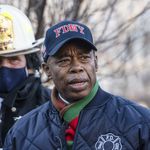President John F. Kennedy was killed sixty years ago on November 22, 1963. We mourn JFK's loss, and our Nation's disgraceful coverup of his murder.
I was six years old on the day JFK was murdered in Dallas, Texas on November 22, 1963. I wore a JFK costume for Halloween, only 22 days earlier, and now my President was dead. In my elementary school in South Jersey, I heard the third and fourth graders down the hall cheering when principal Howard F. Reilly announced that President Kennedy had been shot.
Reflecting their parents' prejudices, kids in Dallas, Texas cheered. In Orlando, Florida, NASA and defense contractor employees working for Martin Marietta allegedly stood on engineering tables and cheered and applauded. KKK was elated. Good and decent Americans were horrified and went to work.
My dad studied the facts and spoke out on Philadelphia radio talk shows about the JFK assassination.My dad knew ballistics first-hand as a WWII 82nd ABN DIVN paratrooper, a decorated combat veteran and machine-gunner. My dad read the Warren Commission report. My dad read the critiques. So did I. My dad asked the eight top Master Sergeants in the 82nd ABN DIVN if they could have made the rifle shots that killed President John F. Kennedy. Every single one said, "No."
I agree with the House Select Committee on Assasinations that JFK was murdered as a result of a criminal conspiracy and coverup.
We were horrified by the attempted January 6, 2021 insurrection at the behest of President DONALD JOHN TRUMP.
Enough intrigue and insurrection.
Our democratic republic is still in peril.
As the late Senator John McCain said, we need to get back to "regular order."
Ask questions. Demand answers. Expect democracy.
From New York Magazine:
The Secrets of the JFK Assassination Archive
How a dogged journalist proved that the CIA lied about Oswald and Cuba — and spent decades covering it up.
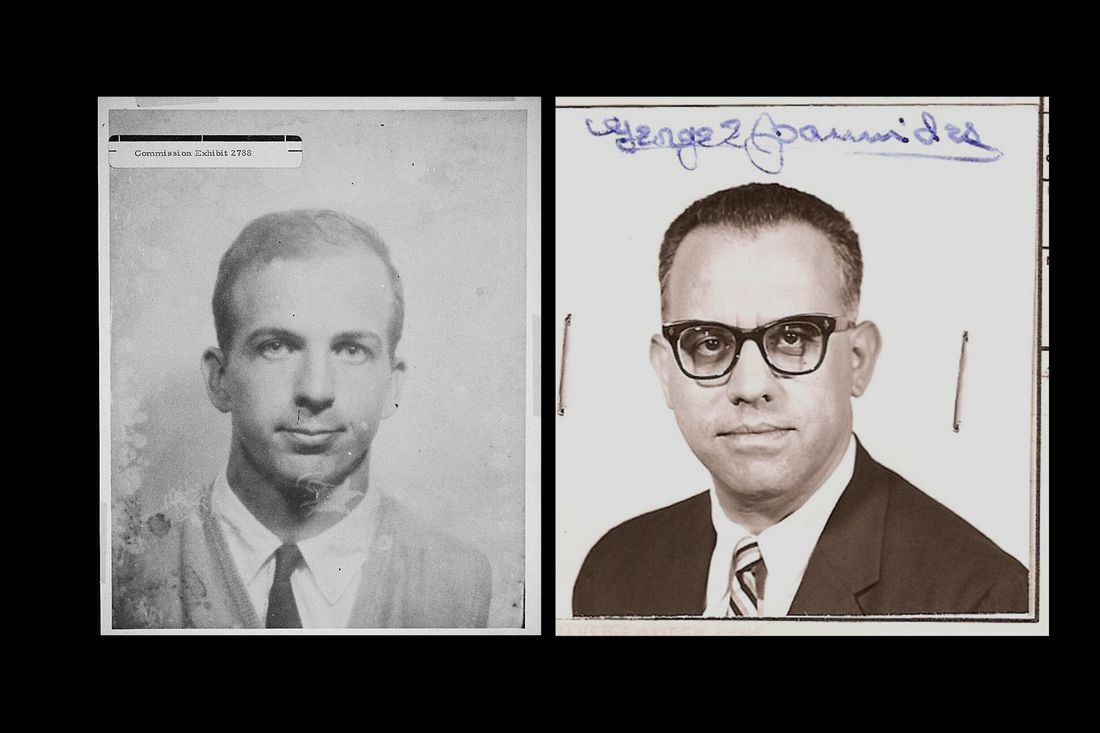
This article was featured in One Great Story, New York’s reading recommendation newsletter. Sign up here to get it nightly.
In 1988, in an elevator at a film festival in Havana, the director Oliver Stone was handed a copy of On the Trail of the Assassins, a newly published account of the murder of President John F. Kennedy. Stone admired Kennedy with an almost spiritual intensity and viewed his death on November 22, 1963 — 60 years ago this month — as a hard line in American history: the “before” hopeful and good; the “after” catastrophic. Yet he had never given much thought to the particulars of the assassination. “I believed that Lee Oswald shot the president,” he said. “I had no problem with that.” On the Trail of the Assassins, written by the Louisiana appellate judge Jim Garrison, proposed something darker. In 1963, Garrison had been district attorney of New Orleans, Oswald’s home in the months before the killing. He began an investigation and had soon traced the contours of a vast government conspiracy orchestrated by the CIA; Oswald was the “patsy” he famously claimed to be. Stone read Garrison’s book three times, bought the film rights, and took them to Warner Bros. “I was hot at the time,” Stone told me. “I could write my own ticket, within reason.” The studio gave him $40 million to make a movie.
The resulting film, JFK, was a scandal well before it came anywhere near a theater. “Some insults to intelligence and decency rise (sink?) far enough to warrant objection,” the Chicago Tribune columnist Jon Margolis wrote just as shooting began. “Such an insult now looms. It is JFK.” Newsweek called the film “a work of propaganda,” as did Jack Valenti, the head of the Motion Picture Association of America, who specifically likened Stone to the Nazi filmmaker Leni Riefenstahl. “It could spoil a generation of American politics,” Senator Daniel Patrick Moynihan wrote in the Washington Post.
Critics objected in particular to Stone’s ennoblement of Garrison, whose investigation was widely viewed, including by many conspiracy theorists, as a farce. And yet some of the response to the film looked an awful lot like a form of repression, a slightly desperate refusal to acknowledge that the official version of the Kennedy assassination had never been especially convincing. One week after the assassination and five days after Oswald himself was killed by nightclub owner Jack Ruby, President Lyndon Johnson convened a panel of seven “very distinguished citizens,” led by Chief Justice Earl Warren of the Supreme Court, to investigate. Ten months later, the Warren Commission concluded that Oswald, firing three shots from the sixth floor of the Texas School Book Depository, had killed Kennedy entirely on his own for reasons impossible to state. Notwithstanding JFK’s distortions — “It’s a Hollywood movie,” Stone pointed out — the film noted quite accurately that the Warren Commission seemed to be contradicted by its own evidence.
In a famous courtroom scene, Garrison, played by Kevin Costner, showed the Zapruder film, the long-suppressed footage of the shooting, rewinding it for the jury as he narrated the movement of Kennedy’s exploding cranium — “Back, and to the left; back, and to the left” — which suggested a shot not from behind, where Oswald was, but from the front right, in the direction of the so-called Grassy Knoll, where numerous witnesses testified to having seen, heard, and even smelled gunshots. (Stone had offered the role of Garrison to Harrison Ford and Mel Gibson, who both passed, but Costner, the very symbol of wholesome Americana, was actually the more subversive choice.) In another courtroom scene, Garrison appeared to dismantle the “single-bullet theory,” according to which the same round had been responsible for seven entry and exit wounds in Kennedy and Texas governor John Connally — an improbable scenario made all the more so by the alleged bullet itself, which was recovered in near-pristine condition. The simplest explanation would have been that all those wounds were caused by more than one bullet, but this would have meant either that Oswald had fired, reloaded, and again fired his bolt-action rifle in less than the 2.3 seconds required to do so or, more realistically, that there was a second shooter.
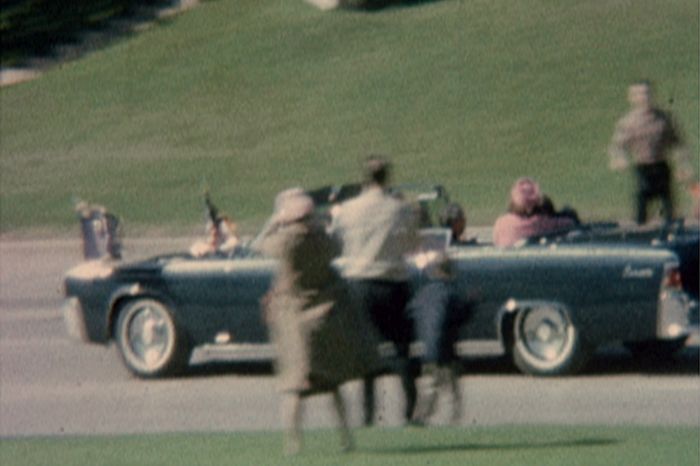
Three of the seven members of the Warren Commission eventually disavowed its findings, as did President Johnson. In 1979, after a thoroughgoing reinvestigation, the House Select Committee on Assassinations officially concluded that Kennedy “was probably assassinated as a result of a conspiracy.” But such findings seemed not to penetrate. “In view of the overwhelming evidence that Oswald could not have acted alone (if he acted at all), the most remarkable feature of the assassination is not the abundance of conspiracy theories,” Christopher Lasch, the historian and social critic, remarked in Harper’s, “but the rejection of a conspiracy theory by the ‘best and brightest.’” For complex reasons of history, psychology, and politics, within the American Establishment it remained inadvisable to speak of conspiracy unless you did not mind being labeled a kook.
Stone ended his film in the style of a documentary, with a written text scrolling beneath John Williams’s high-patriotic arrangement for string and horns, that deplored the official secrecy that still surrounded the assassination. Large portions of the Warren Report, Kennedy’s full autopsy records, and much of the evidence collected by the HSCA had never been cleared for public release. When JFK came out in December 1991, this ongoing secrecy quickly supplanted the movie itself as a subject of public scandal. Within a month, the New York Times was editorializing, if begrudgingly, in Stone’s defense. (“The public’s right to information does not depend on the integrity or good faith of those who seek it.”) By May 1992, congressional hearings about a declassification bill were underway. Stone, invited to testify before the House, declared, “The stone wall must come down.” CIA director Robert Gates pledged to disclose, or at least submit for review, “every relevant scrap of paper in CIA’s possession.” “The only thing more horrifying to me than the assassination itself,” Gates said, “is the insidious, perverse notion that elements of the American government, that my own agency had some part in it.”
The President John F. Kennedy Assassination Records Collection Act of 1992 mandated that “all Government records related to the assassination” be provided to the National Archives and made available to the public. The historian Steven M. Gillon has called it the “most ambitious declassification effort in American history.” It has done little to refute Gates’s “insidious, perverse notion.” On the contrary, for those with the inclination to look and the expertise to interpret what they find, the records now in the public realm are terrifically damning to the Warren Commission and to the CIA.
Among the first visitors to the JFK Assassination Records Collection was Jefferson Morley, then a 34-year-old editor from the Washington Post. Morley had made a name for himself in magazines in the 1980s. He helped break the Iran-Contra scandal for The New Republic and wrote a much-discussed gonzo essay about the War on Drugs for which he’d spent an evening smoking crack cocaine. By that time, he’d become Washington editor of The Nation. He drank with Christopher Hitchens, with whom he was once deported, after a gathering with some Czech dissidents, by that country’s secret police. “He was a little out there,” a colleague at the Postrecalled. “But you want some people like that in the newsroom.” Morley had read about the Kennedy assassination for years as a hobby, but it never occurred to him that he might report on it himself. “I never thought I had anything to add,” he told me. “Until 1992.”
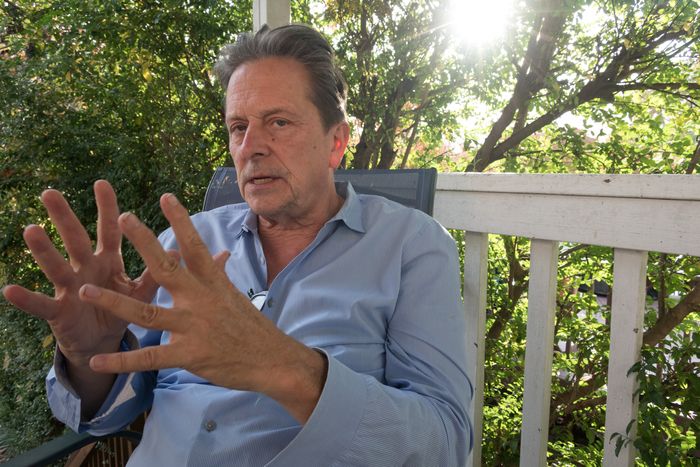
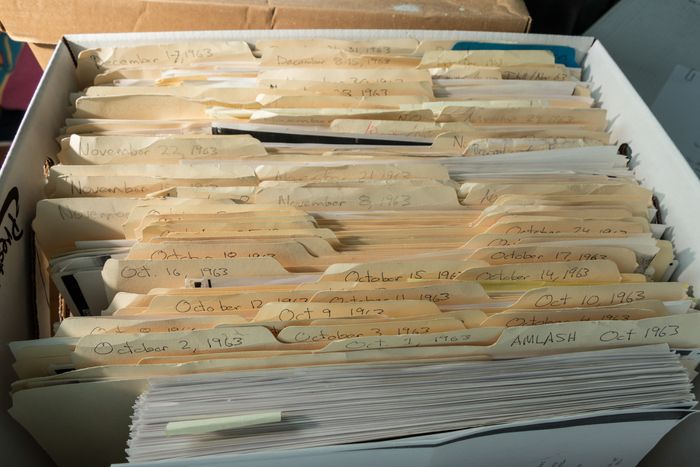
I visited Morley in Washington in September. He is now 65 and somewhat more demure than his younger self, if still combative, with a sweep of gray hair, a high brow, and a sharp nose that together lend him a vaguely avian aspect, an impression heightened by his tendency to cock his head quizzically, like an owl, and speak into the middle distance. We met at the brick rowhouse that he still shares with his second wife, with whom he is in the midst of a divorce. She will keep the house, and Morley was not yet certain where he would go, but they agreed that he could stay through “the coming JFK season,” as he put it. His small office is there, as is his personal file collection, three decades of once-classified records culled from the National Archives and stored in worn banker’s boxes, tens of thousands of photocopy sheets arranged chronologically and, in duplicate form, by subject matter. “If you use what we’ve learned since the ’90s to evaluate the government’s case,” he told me, “the government’s case disintegrates.”
Morley, the author of three books on the CIA and the editor of a Substack blog of modest but impassioned following called JFK Facts, has made a name for himself among assassination researchers by attempting to approach Kennedy’s murder as if it were any other subject. “Journalists never report the JFK story journalistically,” he said. Early on, when Morley was still at the Post, editors would frequently ask, “What does this tell us about who shot JFK?” “I have no idea!” he responded. “I have to have a fucking conspiracy theory?”
He did not set out to make a career of the JFK Act, but the declassification process has taken longer than expected. At the urging of the CIA and other agencies, President Donald Trump twice extended the original 2017 deadline. In 2021, President Joe Biden pushed it to 2022 before extending it once again. At least 320,000 “assassination-related” documents have been released; by one estimate, some 4,000 remain withheld or redacted, the majority belonging to the CIA.
Morley’s serious interest in the assassination had begun in the early 1980s, prompted by Christopher Lasch’s attack on the conspiracy taboo in Harper’s. (He’d helped edit the essay.) He began to read the available literature. Some of the “conspiracy” books were highly suppositious, in his view, but some he found to be impressively thoughtful, documented, even restrained. Sylvia Meagher’s 1967 critique of the Warren Commission, Accessories After the Fact, based on a close reading of the commission’s report and its appendices, was particularly influential. The report “didn’t hang together,” Morley said, “didn’t make sense on its own terms.”
In 1992, during passage of the JFK Act, he was hired by the WashingtonPost to work for “Outlook,” the paper’s Sunday opinion section, an outpost of impertinence and boundary-testing in an otherwise buttoned-down newsroom. By Morley’s recollection, he pitched a piece about the JFK archive during his job interview. “They didn’t realize all these records were coming out, they weren’t really paying attention, and I was on the ball,” Morley said.
Morley visited the new archive after work, prospecting for stories, and began contacting researchers of the assassination to ask for guidance. Among them was John Newman, a U.S. Army major who had spent 20 years in Army intelligence and written a widely praised history of Kennedy and Vietnam. Newman, who also served as a consultant on JFK, was then at work on a book about Oswald and his connections to the CIA.
The possibility of such a tie had been floated since almost the moment Kennedy was shot. The mutual detestation between Kennedy and the Agency, especially after the disastrous Bay of Pigs invasion, was widely known in Washington. It is a measure of the paranoia of the era, and also of the Agency’s reputation for lawlessness, that on the afternoon of his brother’s murder, Robert Kennedy summoned the director of the CIA to his home to ask “if they” — the CIA — “had killed my brother,” Kennedy later recalled. (The director, John McCone, said they had not.) The Agency assured the Warren Commission that, prior to the assassination, it had had no particular interest in Oswald and almost no information on him whatsoever. This had always seemed implausible. Oswald was only 24 when he died, but his life had been eventful. He had served as a radar operator in the Marine Corps, stationed at an air base in Japan from which the CIA flew U-2 spy missions over Russia; had then defected to Moscow, where he told American diplomats that he planned to tell the Soviets everything he knew; had been closely watched, if not recruited, by Soviet intelligence services; and had then, in 1962, after more than two and a half years in the USSR, returned, Russian wife in tow, to the United States. One would think the CIA might have taken somewhat more than a passing interest.
Early on, Newman had photocopied the entirety of Oswald’s pre-assassination CIA file at the archive and brought it home. Morley came often to study it. “I had read something that said, you know, they only had five documents on him,” Morley said. “And it was like, ‘No, there were 42.’”
Whatever mystique may attach to it, the CIA is also a highly articulated bureaucracy. Newman encouraged Morley to focus less on the documents themselves than on the attached routing slips. “When you start getting into spy services, everybody lies,” Newman told me. “And so how do you know anything?” The answer was “traffic analysis.” Even if the information contained in an intelligence file was false, Newman believed an account of how that information flowed — who received it, in what form, from whom, when — could be a reliable source of insight.
Via cryptic acronyms, the Agency’s routing slips recorded precisely who had been receiving information on Oswald in the period leading up to the assassination. “It was, when you saw it, a lot of people,” Morley recalled. “I just remember being in John’s basement and thinking, Oh my God.” A large number of senior CIA officers at the Agency’s headquarters had evidently been tracking Oswald, and tracking him closely, since well before November 22, 1963. “The idea that this guy came out of nowhere was self-evidently not true,” Morley said. “That was a door swinging open for me.”
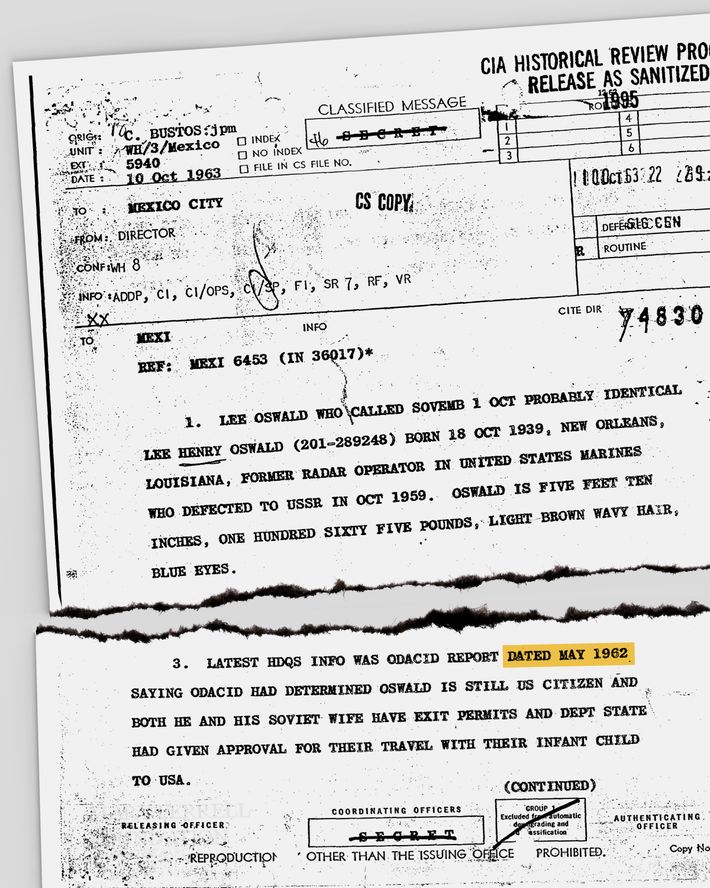
Oswald’s file contained press clippings, State Department archives, and FBI reports detailing his activities in Fort Worth, Dallas, and New Orleans, where he’d been arrested in the summer of 1963 and interviewed at length, in jail, by an agent of the bureau. Of particular interest to Morley, however, was a series of CIA cables from October 1963, the month before the assassination, pertaining to a trip Oswald took to Mexico City.
By the Warren Commission’s determination, Oswald arrived in Mexico City on September 27. Before his return to the U.S. six days later, he seemed to have made several visits to the embassies of both the Soviet Union and Cuba. But there were problems with the evidence. The Warren Commission could not definitively establish that the man who presented himself at the embassies as Oswald was, in all instances, Oswald. A surveillance photograph of a man outside the Soviet Embassy, purportedly of Oswald, was clearly not. This “Mexico Mystery Man” has never been positively identified; no photographs of Oswald in Mexico City have ever surfaced. A CIA wiretap had also picked up someone presenting himself to the Soviets as “Lee Oswald,” but those who later heard the recording, including FBI agents and staff lawyers for the Warren Commission, reported that the caller was not him.
In the file, Morley found a cable from the CIA’s Mexico City station to headquarters in Langley reporting the phone call. “AMERICAN MALE WHO SPOKE BROKEN RUSSIAN SAID HIS NAME LEE OSWALD,” it read. Headquarters responded in a cable dated October 10, recounting Oswald’s defection and his time as a factory worker in Minsk. But it seemed to indicate that the CIA had lost track of him. “LATEST HDQS INFO” was a State Department report from May 1962 before Oswald had returned to the U.S. from the Soviet Union, the cable said. Having seen the CIA file, Morley knew this was not true: The CIA held extensive information on Oswald’s activities in the U.S. from as recently as just a few weeks earlier, including his arrest in New Orleans. Had CIA headquarters acted intentionally, Morley wondered, when it misled the Agency’s people in Mexico City about the man who six weeks later would be accused of killing the president?
He and Newman checked the routing slips. The October 10 cable had received the sign-off of several notably senior officials, including the No. 2 in the Agency’s covert-operations branch. But of particular note was a lesser-known signatory, Jane Roman, a top aide to James Jesus Angleton, the Agency’s famous counterintelligence chief. Just days before approving the October 10 cable, Roman had, in her own hand, signed for FBI reports that placed Oswald unequivocally in the U.S.
Morley and Newman found Roman’s address and visited her at her ivied bungalow in Cleveland Park, a tony D.C. neighborhood favored by CIA officials. Roman, then 78, was reserved but cordial, “a correct, smart, Wasp woman,” Morley said. She seated her visitors at a dining table beneath the dour portrait of a forebear.
Newman asked most of the questions. (Newman and Morley are still friendly, but each has a tendency to present himself as the central protagonist in the story of Jane Roman. Roman died in 2007.) He spread documents on the table and walked Roman through them, beginning with a routing slip from shortly after Oswald’s return from the USSR. It had been signed by officials of the Soviet Realities branch, of counterintelligence, of covert operations, and elsewhere. Newman asked, “Is this the mark of a person’s file who’s dull and uninteresting?” “No, we’re really trying to zero in on somebody here,” Roman said. Newman showed her the FBI report on Oswald’s arrest in New Orleans, for which Roman had signed on October 4, 1963. Newman then produced the October 10 cable, according to which the Agency had received no information on Oswald in over a year.
“Jane,” Newman said, “you read this file just a couple of days before you released this message. So you knew that’s not true.”
Roman protested that she had “a thousand of these things” to handle. But she soon conceded, “Yeah, I mean, I’m signing off on something that I know isn’t true.” Newman asked if this suggested “some sort of operational interest in Oswald’s file.”
“Well, to me, it’s indicative of a keen interest in Oswald, held very closely on the need-to-know basis,” Roman said. She speculated that there had been an “operational reason” to withhold information about him from Mexico City, though she herself had not been read into whatever “hanky-panky” may have been taking place.
After the interview, Morley and Newman stopped their recorders, thanked Roman, and stepped outside. “John and I looked at each other and said, ‘Oh my fucking God,’” Morley told me. They had coaxed from a highly placed former CIA official, on tape and on the record, an acknowledgment that top CIA officers in Washington had been keenly interested in Oswald before the assassination, so much so that they had intentionally misled their colleagues in Mexico about him for reasons apparently related to an operation of some kind.
Later, Morley spoke with Edward Lopez, a former researcher for the HSCA, where he had been tasked with investigating the CIA. Lopez said, “What this tells people is that somehow the Agency had a relationship with Lee Harvey Oswald prior to the assassination and that they are covering it up.” At the Post, Morley brought the story not to “Outlook” but to the more prestigious “National” section. “And naïve as I was, I thought, This is a great fucking story, and they’re going to love it!” Morley told me.
“National” editors did spend several months working with him, but it was decided that the story could not run in the paper’s news section. There was no explicit prohibition on Kennedy-assassination stories, an editor told me, but if ‘National” was going to publish something “on such an explosive topic,” the paper’s leadership “would’ve wanted it nailed down real tight.”
Morley took the piece to “Outlook,” “an implicit downgrading” in his view. It ran in the spring of 1995. A senior editor took him aside afterward to say, “Jeff, this isn’t good for your career.” “And to me,” Morley recalled, “that was like, ‘Wow, this really is a good story!’”
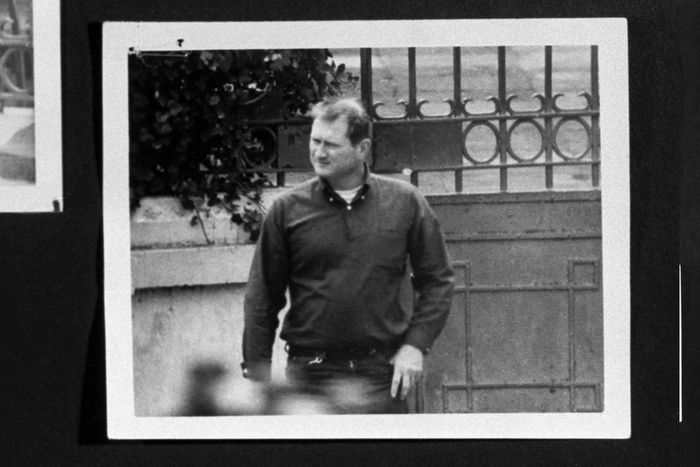
One of the more damning revelations of the past few decades is that the Warren Commission very likely reached its lone-gunman verdict, or rather received it from on high, before it had begun its investigation. This conclusion emerged from later statements by the commissioners; from recordings of the phone calls of President Johnson, in which he made clear that it was of paramount importance to show that Oswald had no ties to either the Soviets or their Cuban allies, so as to avoid “a war that can kill 40 million Americans in an hour”; and, most famously, from a declassified memo prepared for the White House by Assistant Attorney General Nicholas Katzenbach on November 25, one day after Oswald’s death.
“The public must be satisfied that Oswald was the assassin; that he had no confederates who are still at large; and that evidence was such that he would have been convicted at trial,” Katzenbach wrote. “Speculation about Oswald’s motivation ought to be cut off, and we should have some basis for rebutting thought that this was a Communist conspiracy or (as the Iron Curtain press is saying) a right-wing conspiracy to blame it on the Communists.” This evidence certainly does not prove that the Warren Commission was a fraud, or that its conclusions were necessarily wrong, but it does suggest quite strongly that, at its highest levels, the commission was not interested in discovering anything other than Oswald’s sole and apolitical responsibility for the assassination.
Likewise, the Senate’s Church Committee, convened in 1975 to study abuses by the intelligence services, found that the Warren Commission had not received the honest cooperation of the FBI or CIA, which withheld “facts which might have substantially affected the course of the investigation.” The CIA in particular avoided mention of its various plots to assassinate Fidel Castro, one of which had involved a Cuban high official who had, in a meeting in Paris on the very day of Kennedy’s killing, received from a CIA handler the poison pen with which he was supposed to carry out his task. These activities were, in addition to being closely held secrets, patently illegal, and it is understandable that the CIA would not want to disclose them. But it is just as obvious that a thorough investigation of the assassination would have required their disclosure. Castro had stated publicly, for instance, that he would retaliate if he ever discovered that the U.S. was trying to have him killed; the fact that the Agency had been doing precisely this at the time of the assassination would have been a clear investigative lead.
Allen Dulles, a former director of the CIA who sat on the Warren Commission, could have informed his fellow commissioners of the plots. He elected not to. Dulles hated Kennedy, whom he considered a pinko and an interloper and who had unceremoniously fired him as CIA director after the Bay of Pigs. Arlen Specter, who became a senator 15 years after serving on the Warren Commission, used to tell a story about Dulles, which was recounted to me by Carl Feldbaum, Specter’s Senate chief of staff. The commissioners were at one point solemnly passing round Kennedy’s bloodied necktie from November 22; a bullet hole was clearly visible. When the garment came to him, Dulles, puffing on his pipe, examined it for a moment and then, passing it along, remarked, “I didn’t know Jack wore store-bought ties.”
In addition to the Castro plots, the Church Committee was particularly severe with the CIA for its lack of curiosity over “the significance of Oswald’s contacts with pro-Castro and anti-Castro groups for the many months before the assassination.” Oswald’s behavior in the summer of 1963 looked to many critics like that of some sort of spy or agent provocateur. Senator Richard Schweiker, who chaired the Church subcommittee on the Kennedy assassination, said of Oswald, “Everywhere you look with him, there are the fingerprints of intelligence.”
The HSCA investigation, begun in 1977, took a special interest in Oswald’s Cuban contacts, and in particular his interactions with an anti-Castro group known as the Directorio Revolucionario Estudiantil, or DRE. The Warren Commission had reported on the DRE but had never been informed that the group was founded, funded, and closely managed by the CIA.
Prior to the investigation, the HSCA’s lead counsel, G. Robert Blakey, obtained a formal agreement for extensive access to the Agency’s files. “They agreed to give us everything,” Blakey, who is now professor emeritus at Notre Dame, recalled recently. “At some stage, they decided that that was not a good idea.” In 1978, after the HSCA had begun seeking information about the DRE, the CIA named a new liaison to the committee, a notably severe, sharp-dressing senior officer named George Joannides. “He kind of gave the impression of brooking no lightheartedness,” Dan Hardway, a lawyer who dealt extensively with Joannides as an HSCA researcher, told me. Hardway recalled seeing Joannides smile only once, when he brought out a record that was almost entirely redacted. Hardway was furious. “And George was just bouncing,” he said, “just bouncing on his toes.”
Joannides was presented as a “facilitator,” but his actual function seemed to be to “give as little as possible, as slow as possible, and basically wait us out,” Blakey said; the committee’s investigation into the DRE in particular was “frustrated.” “Not ‘frustrated’ because we didn’t get what we wanted,” Blakey said. “We didn’t get anything.” “Joannides screwed us,” Hardway told me.
Joannides’s stonewalling has never been explained by the CIA. It may be instructive to note, however, that not long ago the Agency admitted, albeit not publicly, that it intentionally misled the Warren Commission. A report prepared in 2005 by CIA chief historian David Robarge and declassified in 2014 claimed that Agency officials engaged in a “benign cover-up” in order to prevent the discovery of the Castro plots. It is entirely possible that the CIA’s apparent efforts to keep the HSCA away from the DRE were similarly “benign.” But the purpose would not have been to cover up the Castro plots: The Castro plots had by then been publicly acknowledged. If the CIA was using Joannides to prevent the discovery of some damaging secret, it was evidently something else.
Before meeting Jane Roman, Morley was “still kind of in lone-gunman-land,” he told me. But the story of the October 10 cable convinced him that the Agency had perhaps been using Oswald in some way and that it might bear some responsibility for the assassination, though whether by design or mistake — “complicity” or “incompetence,” in Morley’s words — he could not say. He began to look into Oswald’s connections to the DRE.
In the early 1960s, the CIA supported a number of Cuban exile groups, helping them to conduct psychological warfare, gather intelligence, and run paramilitary operations in Cuba. The DRE, based in Miami, was among the largest and most influential; at one point, it was receiving $51,000 from the Agency every month, the equivalent of about half a million dollars today. Its leaders were profiled in Life.
In 1962, the CIA’s deputy director for operations, Richard Helms, summoned the DRE’s young secretary-general, Luis Fernandez-Rocha, to his office in Langley. “You, Mr. Rocha, are a responsible man,” Helms said, according to a memo released under the JFK Act. “I am a responsible man. Let’s do business in a mature manner.” Helms assured Fernandez-Rocha of his “personal interest in this relationship” and said he would be appointing a new case officer for the DRE, a capable man who would report directly to him.
Oswald encountered the DRE the following year in New Orleans. His behavior during that period was, as the Church Committee noted, perplexing. He presented himself publicly as a member of the New Orleans branch of the Fair Play for Cuba Committee, a controversial pro-Castro group, carrying a membership card signed by the branch president, A.J. Hidell. And yet no such branch existed, nor any such person. (When he was arrested in Dallas, Oswald carried a forged identification card bearing his picture and the name of “Alek James Hidell.”) At the same time, he seemed to be in contact with various opponents of the Castro regime. In August, Oswald approached a man named Carlos Bringuier, presenting himself as a fellow anti-Communist and offering his military expertise to help train rebel Cuban fighters. Bringuier was the DRE’s delegate in New Orleans.
A few days later, a friend told Bringuier that Oswald was nearby, on Canal Street, handing out pro-Castro leaflets (“HANDS OFF CUBA!”). Bringuier went to confront Oswald; the men were arrested for fighting. Before his release from jail, Oswald asked to speak with an FBI agent, to whom he took pains to explain that he was a member of the Fair Play for Cuba Committee. In a radio appearance shortly thereafter, Oswald debated Bringuier on the topic of Kennedy’s Cuba policy. Following the debate, a coalition of anti-Castro groups issued an “open letter to the people of New Orleans” warning that Oswald was a dangerous subversive.
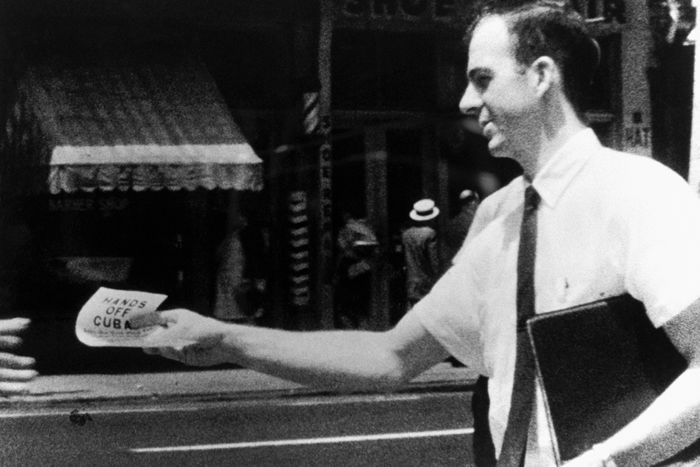
Three months later, the DRE distinguished itself as the source of the Kennedy assassination’s very first conspiracy theory. On November 22, DRE operatives called their contacts in the media to report that they knew the alleged assassin and that he was quite obviously an agent of the Cuban regime. Bringuier made the front page of the next morning’s Washington Post.
At the archive, Morley found monthly progress reports on the DRE that spanned the full era of CIA backing, from 1960 until 1966, except for a conspicuous 17-month gap around the assassination. Morley did find a DRE memo from the missing period, however. It was addressed simply “To Howard.” He assumed this referred to the DRE’s case officer. “So I thought, Well, this guy Howard, if he’s around like Jane Roman was around, that would be a really good story,” Morley said. Morley was able to convince the Post’s investigations editor, Rick Atkinson, to send him to Miami, where he hoped to ask the former leaders of the DRE who Howard was. He flew down from Washington in the fall of 1997.
The DRE men remembered Howard distinctly. He dressed in tailored suits, wore a pinkie ring, and was memorably uncongenial. Fernandez-Rocha, the DRE’s former secretary-general, recalled meeting him as frequently as a few times a week for coffee at a Howard Johnson’s. The group’s previous case officer had been a lovely man, “but he was a sergeant,” Rocha told Morley. “When I was dealing with this guy Howard, I was talking to a colonel.”
When Morley returned to Washington, he brought the question of Howard to the Assassination Records Review Board. The JFK Act had created the ARRB, an independent commission with a staff of about 30 lawyers and researchers, to oversee the initial phase of declassification. The board’s primary task was to identify all assassination-related records in the possession of the CIA, FBI, and other government entities. To the displeasure of some of those bodies, its interpretation of “assassination-related” proved to be sweeping. “We didn’t just dabble in records,” John Tunheim, who chaired the review board until its conclusion in 1998, told me. “We tried to answer as many questions as we could.” The ARRB had in fact already been pressing the CIA for information about the DRE for a year; it added Howard to its request in 1997, asking that the CIA identify him.
In a memo, the Agency responded that the “missing” reports had likely never existed, and that “Howard” was neither a known pseudonym, nor a “registered alias,” nor the true name of any DRE case officer. “The use of ‘To Howard’ might have been nothing more than a routing indicator,” the Agency suggested.
Morley found this explanation wanting. (“A routing indicator with a pinkie ring!” he joked to me.) The ARRB soon issued its final report and disbanded. Shortly thereafter, however, Morley got a call from T. Jeremy Gunn, the board’s lead investigator and chief counsel. An ARRB analyst had apparently managed to identify Howard by reviewing the personnel file of an operations officer known by the pseudonym Walter D. Newby. Newby had become the DRE’s handler in December 1962 and served for 17 months — precisely the period of the missing records. Five of Newby’s job evaluations, or “fitness reports,” had been declassified. The National Archives faxed them to Morley.
The man in the reports certainly seemed to correspond with the “Howard” described by Fernandez-Rocha and the other DRE men. One evaluation from 1963 made note of his “firmness” and his ability “to render a decision without waste of motion.” A later report commended Newby’s “distinct flair for political action operations” — he was by then chief of the covert-action branch at the CIA’s Miami station — but acknowledged a “tendency to be abrupt with subordinates.” Of most interest to Morley, however, was an evaluation from many years after the Kennedy assassination when Newby had been called out of retirement for an assignment of a different sort under his real name. In 1978 and 1979, this report indicated, Newby had served as liaison to the HSCA, where he was lauded for “the cool efficacy with which he handled an unusual special assignment.” His true name was George Joannides.
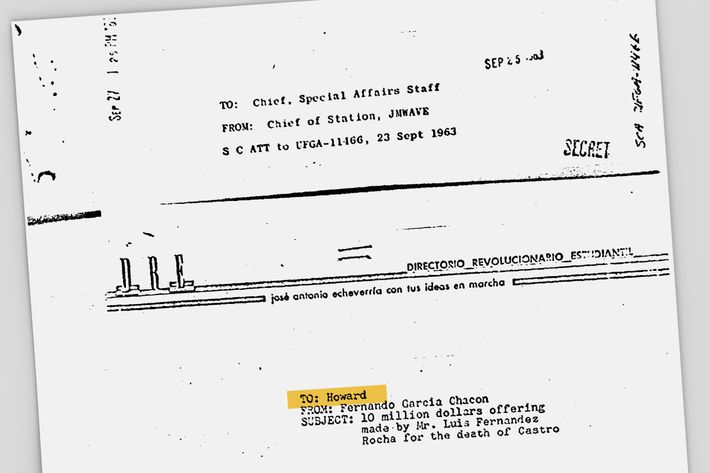
Morley called Blakey, the committee’s chief counsel and lead investigator. “He went ballistic,” Morley recalled. “They flat-out lied to me about who he was and what he was up to,” Blakey told me. “I would have put him under subpoena and put him in a hearing and talked to him under oath.” Blakey released a written statement arguing that Joannides and his superiors were guilty of obstruction of justice. “I no longer believe,” it said, “that we were able to conduct an appropriate investigation of the Agency and its relationship to Oswald.”
Twenty years after the CIA lied about Joannides to the HSCA, the Agency seemed to have done the same to the ARRB. I asked Tunheim, the board’s chair, if he believed that the Historical Review Group, the CIA office assigned to work with the ARRB, had taken part in the deception. “I think they were very truthful with us on what they knew,” he said. “But whether they knew the whole story or were told the whole story, or were even misled by people within the Agency, I can’t answer that.”
Morley brought the Joannides story to the Post but had no luck. I asked Rick Atkinson, the editor who paid for his trip to Miami, if he remembered anything about it. “I vaguely recall Jeff having an interest in the assassination,” Atkinson, a three-time Pulitzer winner, wrote in an email. “Frankly it bored me.” Morley’s career at the Post had begun to stagnate. He became a metro reporter and then a web editor at a time when newspaper websites were widely viewed by newspaper employees as hopeless backwaters. He eventually managed to publish a piece on Joannides in the Miami New Times, a South Florida alt-weekly.
In his spare time, Morley continued his reporting. Joannides had died in 1990. (His obituary in the Post claimed he was a “retired lawyer at the Defense Department.”) But Morley was able to reach several of his aging former colleagues. They recalled a self-possessed and cultivated gentleman operator, with connections at the highest levels of the Agency, “not one of the wild men,” in the words of Warren Frank, who knew Joannides in Miami. There, Joannides managed an annual budget of $2.4 million, the equivalent of ten times that today.
In July 2003, Morley sent the CIA a request, under the Freedom of Information Act, for all records pertaining to Joannides. “The public has the right to know what he knew,” he wrote. The CIA responded with a letter encouraging him to contact the National Archives. With the help of the FOIA lawyer James Lesar, Morley sued.
The 500 pages of documents that ultimately emerged from Morley v. CIAwent well beyond the scope of the five fitness reports released under the JFK Act. Morley was given the Agency’s personnel photograph of Joannides — a menacingly well-kempt man of middle age, dark eyes recessed in shadow, jaw set in an ambiguous glower — as well as documents suggesting that he had spent time in New Orleans and that he had been granted access to a particularly sensitive intelligence stream in June 1963. Many of the documents were heavily redacted; the Agency also acknowledged the existence of 44 documents on Joannides from the years 1963, 1978, and 1979 that it refused to release in any form. “The CIA is saying very clearly, ‘This is top secret, please go away,’” Morley told me. “So that’s where the story is, right? I mean, they’re telling me what’s important, and I believe them.”
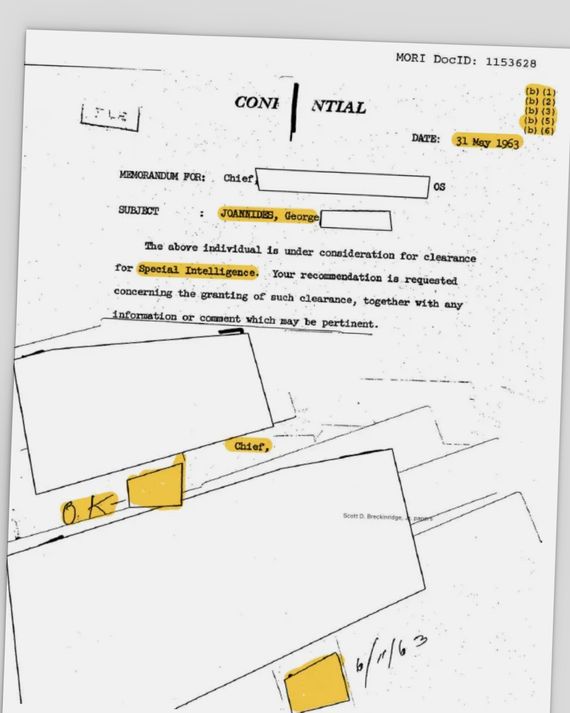
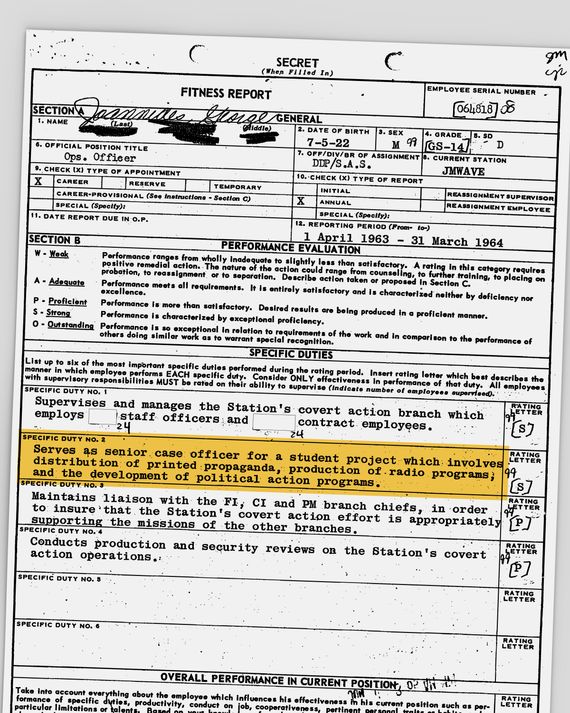
Until recently, if asked what happened in Dallas on November 22, 1963 — the “cosmic question,” as he once put it — Morley deflected. In his writing, he tended to address it only obliquely and declined to articulate an overarching theory, except to say the Warren Commission got it wrong. Over the years, he had made all manner of damning discoveries; what they added up to, beyond a cover-up, Morley professed not to know.
Increasingly, though, he has been willing to theorize. Last year, he published an article on JFK Facts under the headline, “Yes, There Is a JFK Smoking Gun.” “Now, after 28 years of reporting and reflection, I am ready to advance the story,” he wrote. “Jane Roman was correct. A small group of CIA officers was keenly interested in Oswald in the fall of 1963. They were running a psychological warfare operation, authorized in June 1963, that followed Oswald from New Orleans to Mexico City later that year. One of the officers supporting this operation was George Joannides.”
Morley believes Oswald was an “agent of influence,” he told me, or, as at least one CIA officer put it at the time, a “useful idiot” of the Agency. In New Orleans, perhaps he’d been encouraged to prove his leftist bona fides by claiming to be a member of the Fair Play for Cuba Committee. The trip to Mexico seems to have been part of “some kind of probing intelligence operation,” Morley said. But why go to all this trouble? Why hide the operation for so long? Why Oswald?
The parsimonious explanation, Morley believes, is that a “public legend” was being constructed: Someone in the Agency was setting Oswald up to take the fall for the coming assassination. Morley’s suspicion falls most heavily on Angleton, whose office controlled Oswald’s file from the moment it was opened. “Was Angleton running Oswald as an agent as part of a plot to assassinate President Kennedy?” Morley wondered in The Ghost, his 2018 biography of Angleton. “He certainly abetted those who did. Whoever killed JFK, Angleton protected them.” Morley told me he wonders about Bill Harvey, the Agency’s assassinations chief, as well as David Atlee Phillips, who helped found the DRE and was allegedly once seen in Dallas with Oswald. Joannides would have been an “unwitting co-conspirator,” Morley believes, oblivious to what his superiors were doing with him until the moment Kennedy was shot, and then brought in as the cleanup man.
This is all possible but also extremely speculative. Why risk speaking it aloud? Certainly he has been criticized for it. In a review of The Ghost, the author and intelligence historian Thomas Powers submitted that Morley had “suffered a kind of mid-life onset of intellectual hubris,” convincing himself that he knew the truth of the assassination even if the evidence had yet to materialize. A number of Morley’s friends and fellow researchers expressed some version of this concern to me as well. “Sometimes I worry for Jeff,” said the journalist Anthony Summers, the author of a respected assassination book called Not in Your Lifetime. “Commitment to a story is a virtue. But sometimes, I think, his writing goes beyond what the facts justify. He surprises me with his certainties.” The assassination has been known to drive people to unreason. “They tend to be smart people who are wide readers and trust their ability to figure things out,” Powers, the intelligence historian, told me. “It’s a subject that people get lost in. And sometimes they’re seen again, and sometimes not.”
Morley’s rigor has unquestionably eroded a bit in recent years. In August, he published a short post on JFK Facts about a Kennedy-administration memo proposing a “drastic” reorganization of the CIA. He’d just discovered the document; 60 years after the fact, it was still partially redacted. Why? “To protect the CIA’s impunity,” Morley declared. Fred Litwin, an anti-conspiracist assassination buff and blogger, pointed out that Morley’s new document was merely an alternate copy of a famous memo by Kennedy adviser Arthur Schlesinger Jr. “Will Jefferson Morley correct this error?” Litwin wondered. He never did.
A few weeks earlier, Morley had convinced Peter Baker, the prolific New York Times White House correspondent, to write about Ruben Efron, a CIA officer who had once been tasked, as part of an illegal program run by Angleton, with reading Oswald’s mail. Efron’s name seemed to have been the sole remaining redaction in Oswald’s pre-assassination CIA file, but it had just been released. “People say there’s nothing significant in these files?” Morley told Baker. “Bingo! Here’s the guy who was reading Oswald’s mail, a detail they failed to share until now. You don’t have to be a conspiracy theorist to think it’s suspicious.” (“I keep a very open mind,” Baker told me.) But Efron’s name had in fact been released a few times over the years in documents elsewhere. Paul Hoch, who is widely viewed as the doyen of serious assassination research, saw no meaning in the new release. “Knowing his name doesn’t add anything,” Hoch told me. Certain colleagues have begun referring to “good Jeff” from the first 25-odd years and “bad Jeff” from more recently.
On the one hand, Morley’s new willingness to speculate strikes me as a natural and reasonable evolution. Like all investigations, his has always been driven by hypothesis, and he has now been improving and refining his theory of CIA involvement for three decades. On the other, advancing a theory of the Kennedy assassination is what the nuts do. When I asked him what had caused the change in approach, he grew testy. “The evidence,” he said.
We were drinking coffee on the back porch of the house he would soon have to leave. “Do my critics have another explanation for what Joannides was doing and who he was working for?” he asked. “People bitch about my interpretation. I brought new facts to the table which they can’t explain, or have not explained, and those facts are indisputable.” The twinkly music of an ice-cream truck floated up from somewhere. “People will wonder, ‘Why did you devote all this time and effort to it?’” Morley said. “I was very careful because I’ve seen it drive so many people crazy. This is not going to drive me crazy.”
Despite his best efforts, since 2008 he has not extracted any further documentation on Joannides from the CIA. His FOIA lawsuit came to an end in 2018, when then–Circuit Judge Brett Kavanaugh and a colleague ruled that his attorney, Lesar, would not have his fees paid by the CIA. The Agency and a lower court deserved “deference piled on deference,” the judges held. (On the same day, Trump nominated Kavanaugh to the Supreme Court.) There are scarcely any CIA officers from Joannides’s time left to talk to. The DRE men have begun to die.
This summer, President Biden endorsed “Transparency Plans” proposed by the CIA and a handful of other agencies, effectively delegating oversight of any additional declassification to the agencies themselves. “He’s washing his hands of it,” Tunheim, the ARRB chair, told me. No clear mechanism exists to compel the release of any further documents, ever.
In its executive session of January 27, 1964, the Warren Commission took up a rumor, passed on by the attorney general of Texas, that Lee Harvey Oswald had been working undercover for the FBI or perhaps the CIA. The commissioners did not seem to take the claim very seriously, but they did wonder how one might verify such a thing. Having on hand a former director of the CIA, the group naturally sought his insights. Allen Dulles told his fellow commissioners, to their apparent disbelief, that one could not expect an intelligence service to be knowledgeable in such matters or truthful if it were.
The recruiting officer would of course know of an agent’s recruitment, Dulles said, but he might be the only one, and “he wouldn’t tell.”
“Wouldn’t tell it under oath?” asked Justice Warren.
“I wouldn’t think he would tell it under oath, no,” Dulles responded. “He ought not tell it under oath.” Nor could one expect to find any written record of such an agent. “The record might not be on paper,” Dulles said, or might consist of “hieroglyphics that only two people knew what they meant.” He clarified later, “You can’t prove what the facts are.”
The impulse to try may be stronger than reason. I asked the CIA if Oswald had ever been “an agent, asset, source, or contact” of the Agency. A spokesperson replied, in writing: “CIA believes all of its information known to be directly related to the assassination of President John F. Kennedy in 1963 has already been released. Likewise, we are not aware of any documents known to be directly related to Oswald that have not already been made part of the Collection.” I confess to finding it striking that the Agency did not say, “To the best of our knowledge, no.” Morley would call this, to use the Post’s famous Watergate phrase, a “non-denial denial.” He would no doubt apply the same term to the Agency’s “decline to comment”s on my questions about why Joannides had concealed his role in 1963 from Congress and about whether the CIA had “cooperated fully and faithfully” with the Warren Commission, with the HSCA, or with the ARRB. But then, why take the Agency at its word, whatever it may be?
Assuming for the sake of argument, however, that the CIA did generate a record of Agency activity around Oswald, and that this record was faithful, would it be reasonable to hope to one day find it? Though he has spent most of his adult life in precisely this pursuit, Morley told me he does not believe it would. During the 17-month gap in reporting on the DRE, for instance, he suspects Joannides produced regular reports and that those reports mentioned Oswald; he suspects the reports were sent directly to Helms at headquarters; and he suspects Helms destroyed them in 1973, when he left the Agency. There are in fact numerous instances of ostensibly “assassination-related” documents being irregularly destroyed. I find this devastating myself. Burning records is not an especially subtle method of concealing the past, but the bluntness is what is so distressing. If this is the way the CIA has been playing, the game has been all but hopeless from the start.
And yet the archive pulls at you, irresistible, irrational, a form of gravity upon the mind. I visited the National Archives in September. The President John F. Kennedy Assassination Records Collection is held in a glassy modern building in the woods beyond the University of Maryland in College Park. The collection now holds about 6 million pages, kept in gray, five-inch, acid-free paperboard Hollinger boxes, maintained at constant temperature and humidity in stacks accessible only to archivists with the requisite security clearance. I sat in the airy reading room, afternoon sun streaming in over the treetops, and leafed through the CIA’s pre-assassination file on Oswald.
I found the October 10 cable, bearing Jane Roman’s name and reporting, falsely, that “LATEST HDQS INFO” was from May 1962. I found a small photograph of the Mexico Mystery Man. I found a typewritten letter addressed to Allen Dulles, dated November 11, 1963, from a man who wished to infiltrate the American Communist Party for the CIA; it was accompanied by a slip marked “FOR MR. ANGLETON” with a handwritten note reading, “Some useful ideas here — you will have many more,” and signed, “Allen.” I found, on paper gone gauzy and translucent with time, a memorandum to the Warren Commission from the CIA about redactions. There were things in the files sent over by the Agency that, in the Agency’s estimation, the commission did not need to know. “We have taken the liberty,” Richard Helms advised, “of blocking out these items.”
Earl Warren, born in the 19th century, died trusting in the good faith of men such as Helms, Angleton, and Dulles and of institutions such as theirs. “To say now that these people, as well as the Commission, suppressed, neglected to unearth, or overlooked evidence of a conspiracy would be an indictment of the entire government of the United States,” he wrote in his memoirs. “It would mean the whole structure was absolutely corrupt from top to bottom.” Warren evidently found the idea of a plot of any sort too monstrous to contemplate. Dulles, of all people, had once tried to make him understand that the world wasn’t quite as honest as he thought. The proof was there, if only one could see it.
Correction: Brett Kavanaugh was a circuit judge in 2018. A previous version of this story misstated his role.MOST VIEWED STORIES


